 1997 Volvo V70 I Dimensions, Size & Specs
1997 Volvo V70 I Dimensions, Size & SpecsMeasurements of the 1997 Volvo V70 I, engineered for optimal performance and comfort
| Dimensions | |
|---|---|
| Length: | 4730 mm186.2 in15.5 ft |
| Width: | 1760 mm69.3 in5.8 ft |
| Height: | 1430 mm56.3 in4.7 ft |
| Ground Clearance: | 140 mm5.5 in0.5 ft |
| Trunk Capacity: | 420 liter14.8 cu ft |
| Trunk Capacity (Max): | 1580 liter55.8 cu ft |
| Weight Specifications | |
| Curb Weight: | 1434-1660 kg3161-3660 lbs |
| Maximal permitted Weight: | 1970-2160 kg4343-4762 lbs |
| Roof Load: | 100 kg220 lbs |
| Tire Specifications | |
| Rims Sizes: | 15-inch rims:
|
| Tire Sizes: |
|
The Volvo V70 I, produced from 1996 to 2000 and introduced as the 1997 model year, is a classic station wagon renowned for its spaciousness, safety, and practicality. Measuring 4730 mm (186.2 in) in length, 1760 mm (69.3 in) in width, and 1430 mm (56.3 in) in height, it offers an optimal balance between exterior size and interior space, making it suitable for families and those needing ample cargo room. The ride height or ground clearance stands at 140 mm (5.5 in), providing decent road clearance for daily driving scenarios.
The V70 I's curb weight ranges from 1434 kg to 1660 kg (3160 to 3661 lbs), depending on configuration and equipment, with a maximum allowed weight between 1970 kg and 2160 kg (4344 to 4760 lbs). Its luggage capacity is particularly noteworthy, offering 420 liters (14.8 cubic feet) of cargo space with the rear seats upright and expanding to 1580 liters (55.8 cubic feet) once the rear seats are folded down, demonstrating the vehicle’s versatility for transporting large loads or luggage.
This generation of the V70 supports roof loads of up to 100 kg (220 lbs), suitable for additional storage options such as roof boxes or bicycle racks. The V70 I came equipped with a variety of rim sizes including 15, 16, and 17 inches (with 6.5J x 15 rims), and multiple tire sizes such as 185/65 R15, 205/55 R15, 205/50 R16, 205/45 R17, 195/60 R15, and 195/65 R15, allowing for flexibility in terms of handling and ride comfort.
In summary, the Volvo V70 I is a well-sized station wagon that perfectly blends Swedish engineering quality with practical dimensions. Its generous cargo capacity, combined with moderate exterior dimensions and a solid build, make it a capable and reliable vehicle for daily commuting, family trips, or transporting sizable cargo while maintaining comfort and safety.
Discover the standout features that make the 1997 Volvo V70 I a leader in its class
Have a question? Please check our knowledgebase first.
The Volvo V70 I, produced from 1996 to 2000, features a length of 4730 mm (186.2 inches), a width of 1760 mm (69.3 inches), and a height of 1430 mm (56.3 inches). These dimensions provide a balanced profile for a mid-sized station wagon, allowing for both comfortable cabin space and manageable exterior size suitable for urban and highway driving.
The Volvo V70 I has a curb weight ranging between 1434 kg to 1660 kg (3160 to 3659 lbs), depending on the specific engine and trim configuration. This weight range strikes a balance between sturdy build quality and efficiency. Heavier versions provide more equipment and enhanced safety features but may slightly reduce fuel efficiency. The balanced weight contributes to stable handling and a secure ride typical of Volvo's design philosophy.
The maximum permissible weight for the Volvo V70 I ranges from 1970 kg to 2160 kg (4344 to 4762 lbs). This figure represents the total vehicle weight including curb weight, passengers, cargo, and any additional accessories. It ensures safe driving by not exceeding the structural and mechanical limits of the vehicle, allowing practical utility for families and travelers with substantial luggage or equipment.
The Volvo V70 I offers 420 liters (approximately 14.8 cubic feet) of luggage capacity with the rear seats upright, which is suitable for daily errands and small trips. When the rear seats are folded flat, the space dramatically increases to 1580 liters (about 55.8 cubic feet), providing ample room for larger cargo, making it an excellent choice for longer journeys or transporting bulky items.
The Volvo V70 I has a ride height (ground clearance) of 140 mm (5.5 inches). This moderate ground clearance allows the vehicle to easily handle most urban roads and highways while managing mild off-road conditions or uneven surfaces. The clearance ensures a balance between ease of entry/exit, stability at speed, and the capability to clear common road obstacles or speed bumps without scraping.
With a length of 4730 mm (186.2 inches or about 15.4 feet) and a width of 1760 mm (69.3 inches or about 5.8 feet), the Volvo V70 I will generally fit into a standard home garage, which is typically about 6 meters (20 feet) deep and 2.4 meters (8 feet) wide. However, tight clearances on either side may require careful maneuvering, especially in narrower or older garages. The vehicle’s height of 1430 mm (56.3 inches) is also well within typical garage door heights, making it suitable for most residential parking spaces.
The Volvo V70 I succeeded the Volvo 850 Estate, offering a slightly longer body at 4730 mm compared to approximately 4700 mm of the 850, resulting in a marginal increase in overall length. Width and height are comparable, with the V70 I optimized for a more aerodynamic and modern silhouette. Practical improvements include enhanced luggage space and better interior ergonomics, alongside updates to suspension and safety, making the V70 I more refined while maintaining the estate’s hallmark spaciousness.
In comparison to contemporaries like the Audi A4 Avant and BMW 3 Series Touring from the late 1990s, the Volvo V70 I is generally larger in both length and luggage capacity. For example, the Audi A4 Avant typically measured around 4510 mm in length, significantly shorter than the V70 I’s 4730 mm, making the Volvo roomier inside especially for cargo and rear-seat passengers. This size advantage made the V70 a preferred choice for buyers needing extra practicality without moving up to a large SUV or sedan.
The Volvo V70 I came with a range of rim sizes including 15, 16, and 17 inches, with tire sizes varying from 185/65 R15 to 205/45 R17. Smaller rims with higher profile tires generally provide a more comfortable ride by absorbing road imperfections, while larger rims with lower profile tires enhance handling precision and stability. This selection allowed buyers to prioritize ride comfort or sporty driving dynamics based on personal preferences.
The Volvo V70 I has a recommended roof load capacity of 100 kg (about 220 lbs). This means when using roof racks or cargo boxes, owners should ensure the combined weight of the rack and cargo does not exceed this limit to maintain vehicle stability and avoid structural damage. Exceeding roof load can impact driving dynamics, cause increased wind noise, and potentially damage the roof. Properly securing loads and distributing weight evenly is important for safe transport of bulky items such as bicycles or luggage.
Discover similar sized cars.
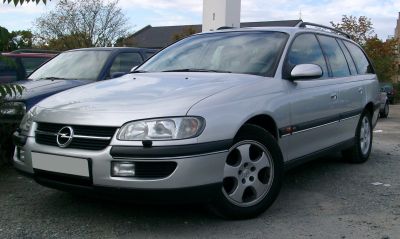
| Production: | 1994-1999 |
|---|---|
| Model Year: | 1994 |
| Length: | 4820 mm189.8 in |
| Width: | 1785 mm70.3 in |
| Height: | 1500 mm59.1 in |
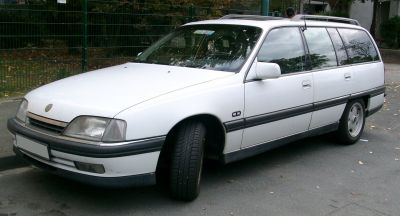
| Production: | 1986-1993 |
|---|---|
| Model Year: | 1987 |
| Length: | 4770 mm187.8 in |
| Width: | 1760 mm69.3 in |
| Height: | 1445-1480 mm56.9-58.3 in |
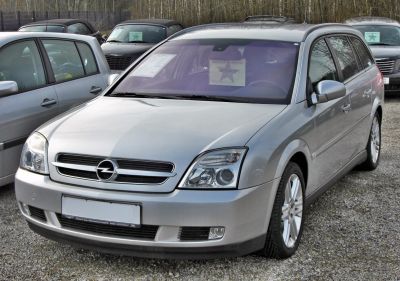
| Production: | 2002-2005 |
|---|---|
| Model Year: | 2003 |
| Length: | 4822 mm189.8 in |
| Width: | 1798 mm70.8 in |
| Height: | 1500 mm59.1 in |

| Production: | 2015-2018 |
|---|---|
| Model Year: | 2015 |
| Length: | 4820 mm189.8 in |
| Width: | 1810 mm71.3 in |
| Height: | 1480 mm58.3 in |

| Production: | 2012-2015 |
|---|---|
| Model Year: | 2012 |
| Length: | 4780 mm188.2 in |
| Width: | 1810 mm71.3 in |
| Height: | 1480 mm58.3 in |

| Production: | 2010-2012 |
|---|---|
| Model Year: | 2011 |
| Length: | 4785 mm188.4 in |
| Width: | 1795 mm70.7 in |
| Height: | 1490 mm58.7 in |
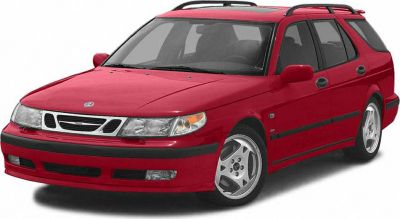
| Production: | 2001-2005 |
|---|---|
| Model Year: | 2001 |
| Length: | 4808-4828 mm189.3-190.1 in |
| Width: | 1792 mm70.6 in |
| Height: | 1492-1501 mm58.7-59.1 in |
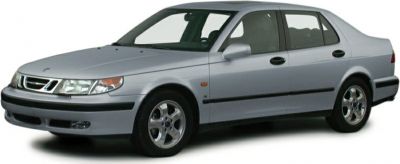
| Production: | 1997-2001 |
|---|---|
| Model Year: | 1998 |
| Length: | 4808 mm189.3 in |
| Width: | 1792 mm70.6 in |
| Height: | 1497 mm58.9 in |
